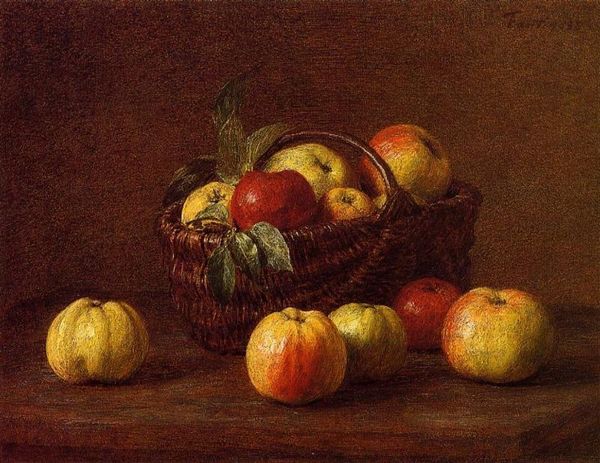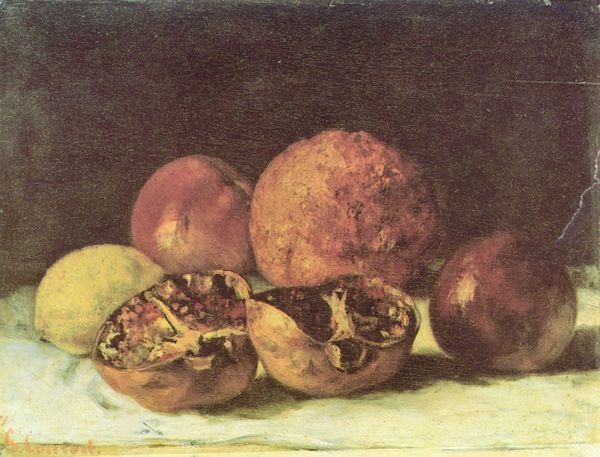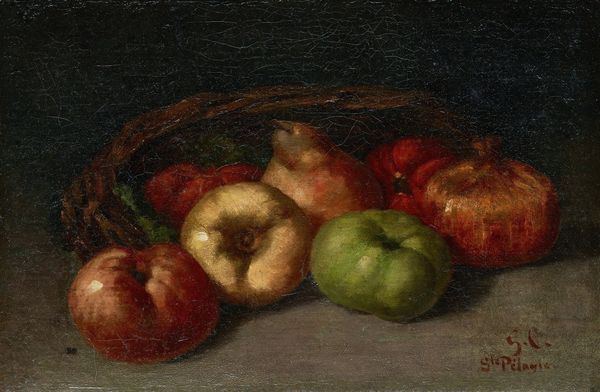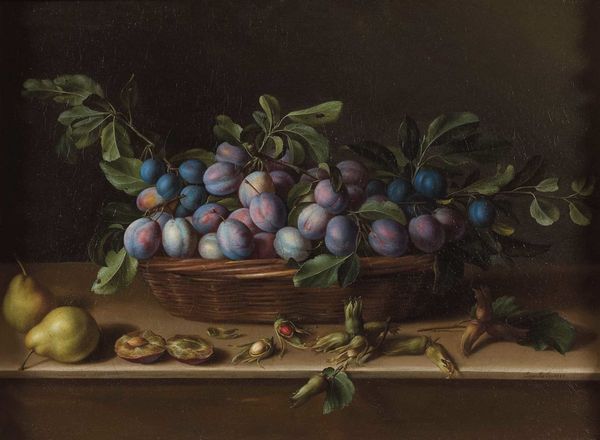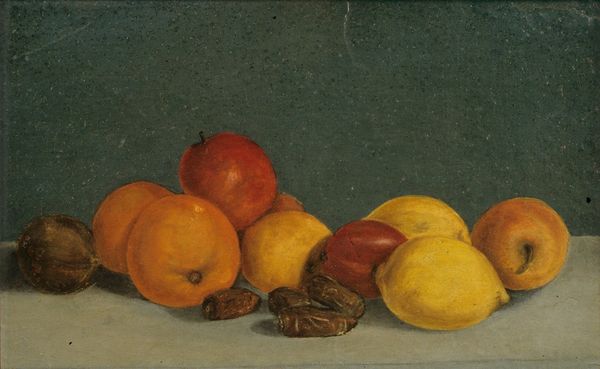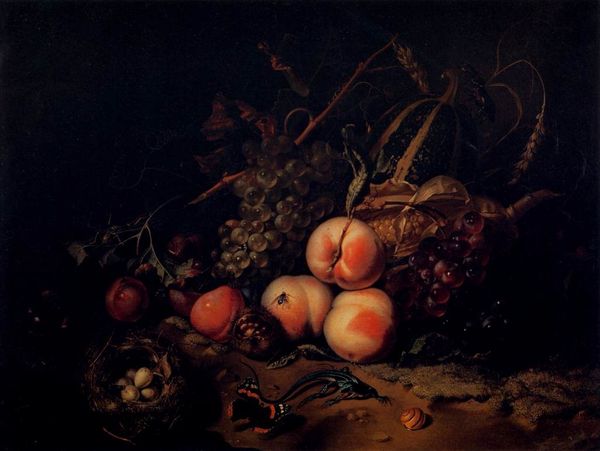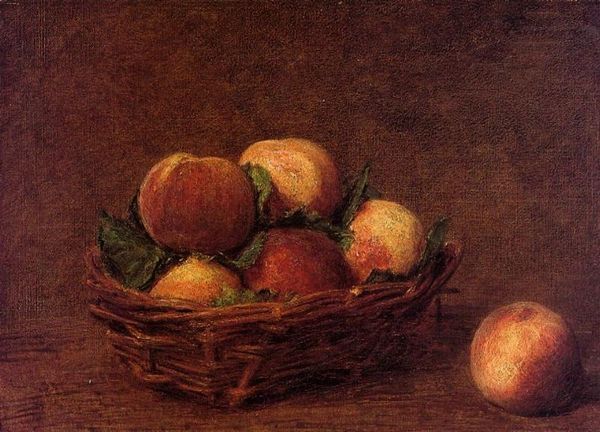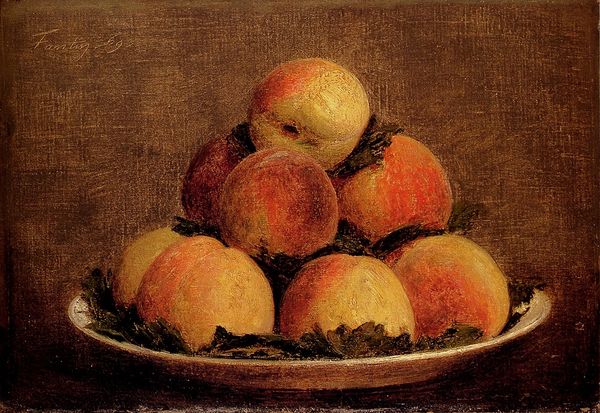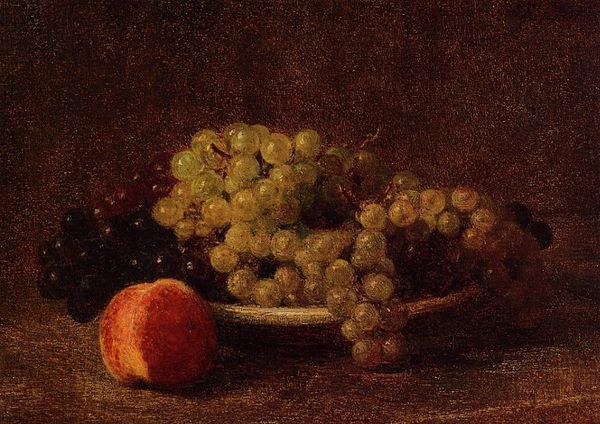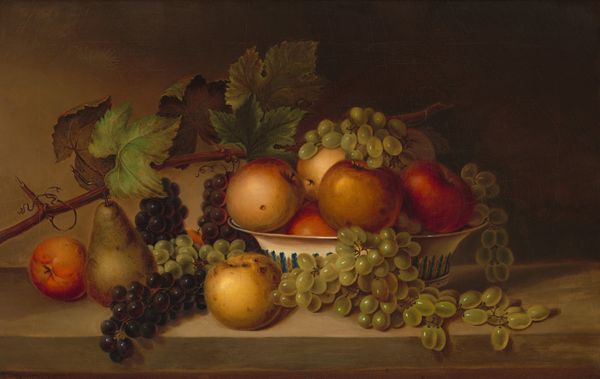
Copyright: Public domain
Editor: This is Henri Fantin-Latour’s "Plums and Peaches," painted in 1894. It’s an oil painting, and I have to say, the somber palette creates quite an intimate mood. What do you see in this piece beyond a simple still life? Curator: Beyond the surface, consider the historical context: Fantin-Latour was working during a time of rapid social and political change. I see the fruit as a potential symbol – maybe the "plums and peaches" represent idealized notions of abundance or even feminine fertility, painted at a historical time of relative optimism before World War I, set in contrast with what’s coming up over the next decades. Editor: Fertility, interesting. I was focusing on the immediate presentation – the darkness, almost a sense of decay... Does that read too negatively? Curator: Not at all! That darkness is crucial. Think about what was considered beautiful, and to whom, at this period of Impressionism. Fantin-Latour departs from portraying conventional beauty standards; his realism prompts questions about gender, race, and class issues around that period in Western Europe, in particular. Are those plums and peaches available to everyone or just to the elite? How does their abundance relate to the widespread poverty of the era? The shadow could signify a world on the verge of profound transformations. Editor: So the painting becomes less about the fruit itself and more about the socio-political moment? Curator: Exactly! The seemingly simple still life acts as a mirror reflecting the complexities of its time. Editor: I never thought of it that way. It gives the artwork much more significance now. Curator: It's amazing how context can alter our perception. Now, does that insight make you view the artwork in a new light? Editor: Absolutely. I now see "Plums and Peaches" not as a still life, but as a reflection on a very specific era, laden with hidden complexities and concerns. Thank you.
Comments
No comments
Be the first to comment and join the conversation on the ultimate creative platform.
